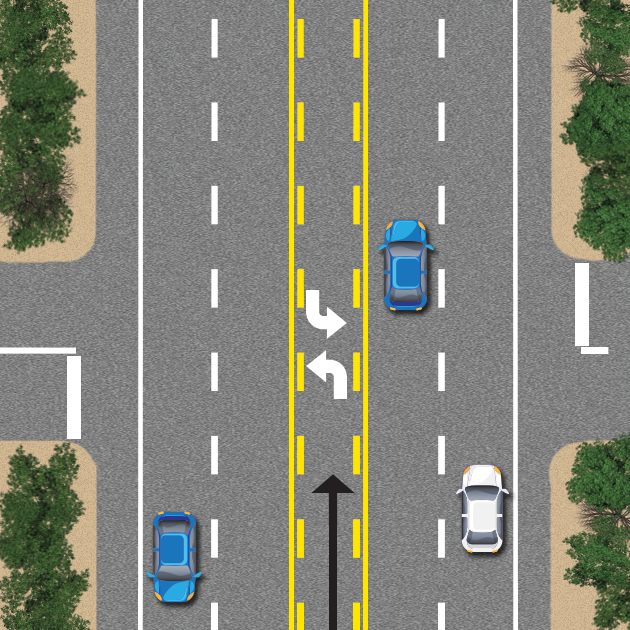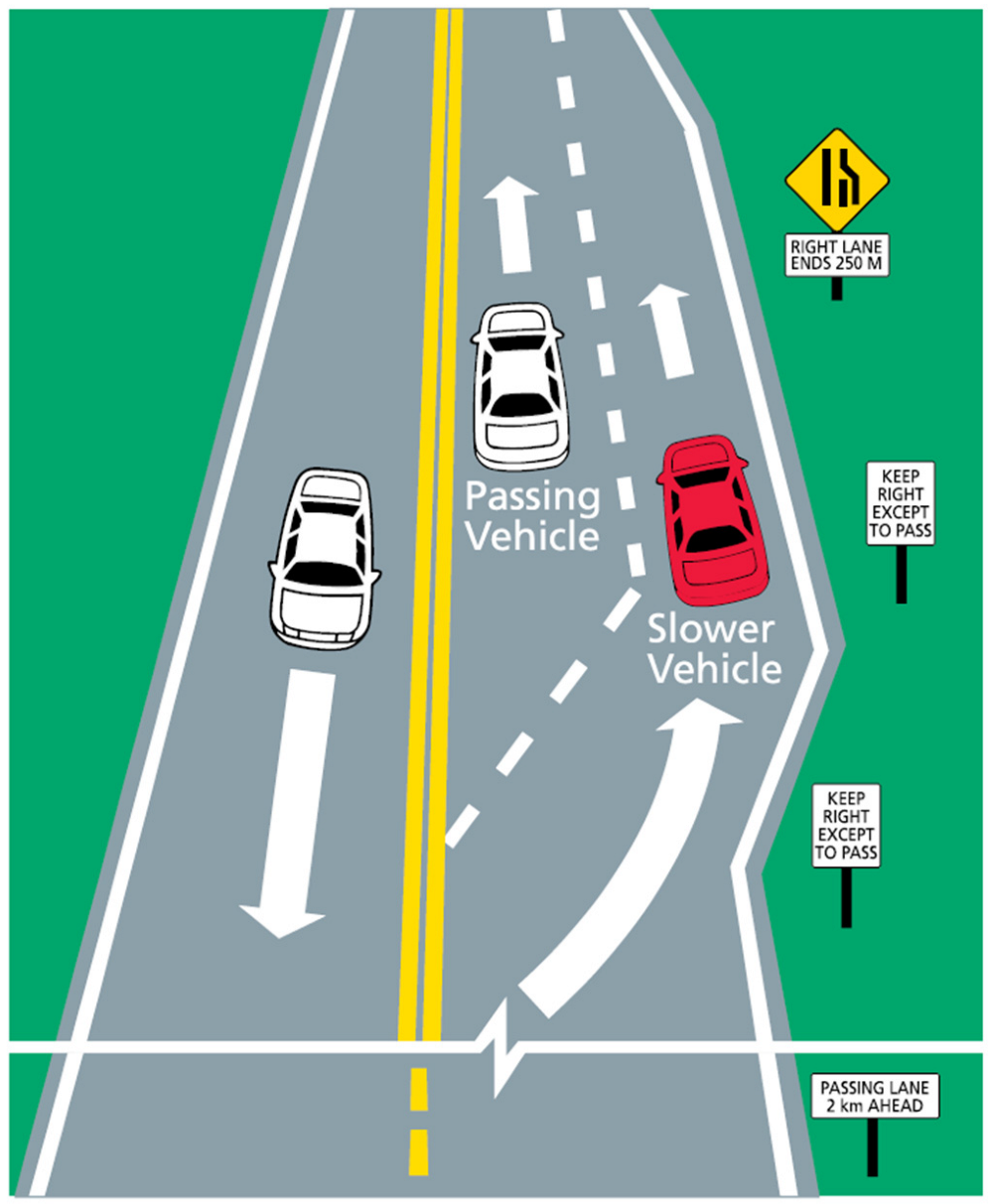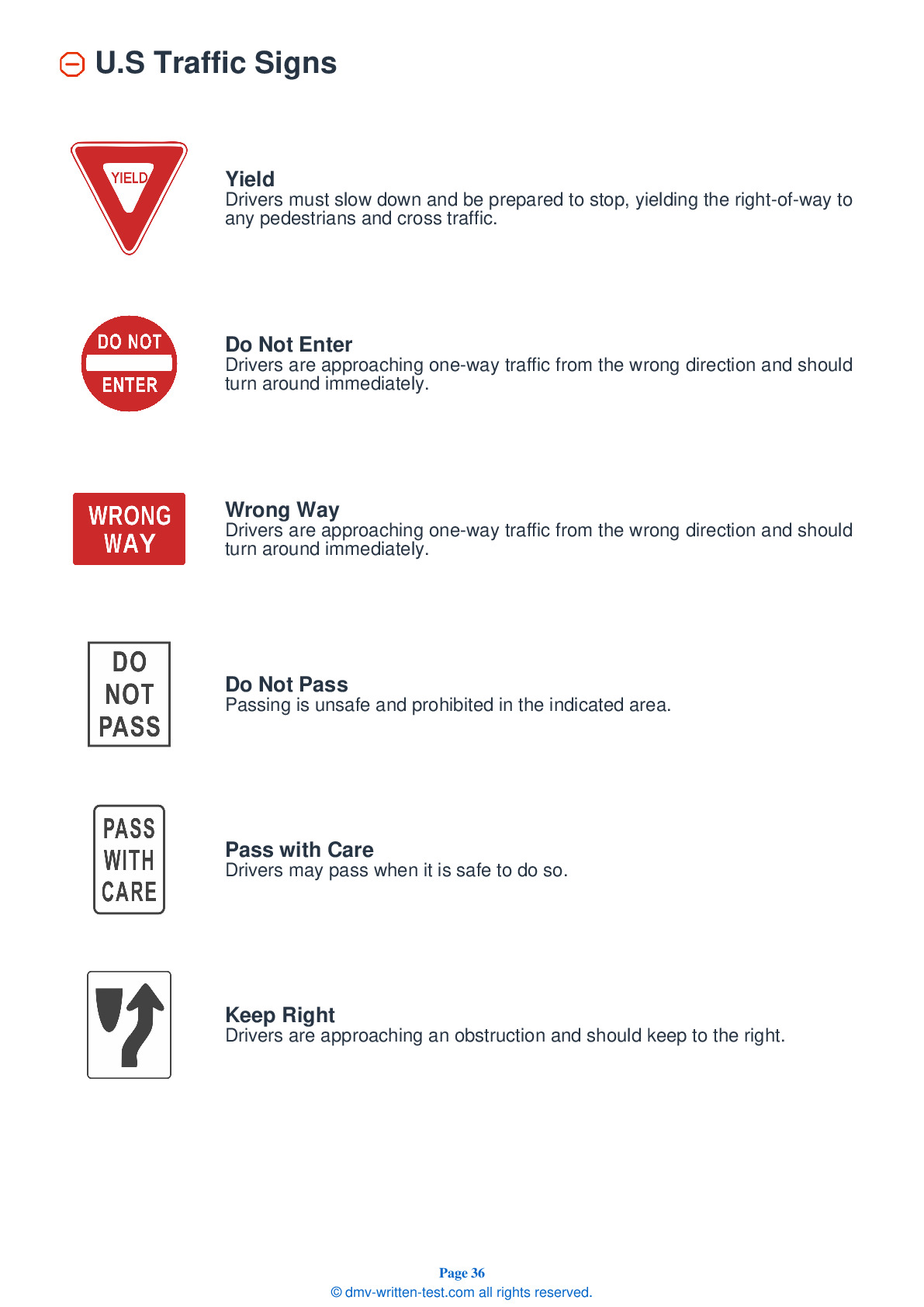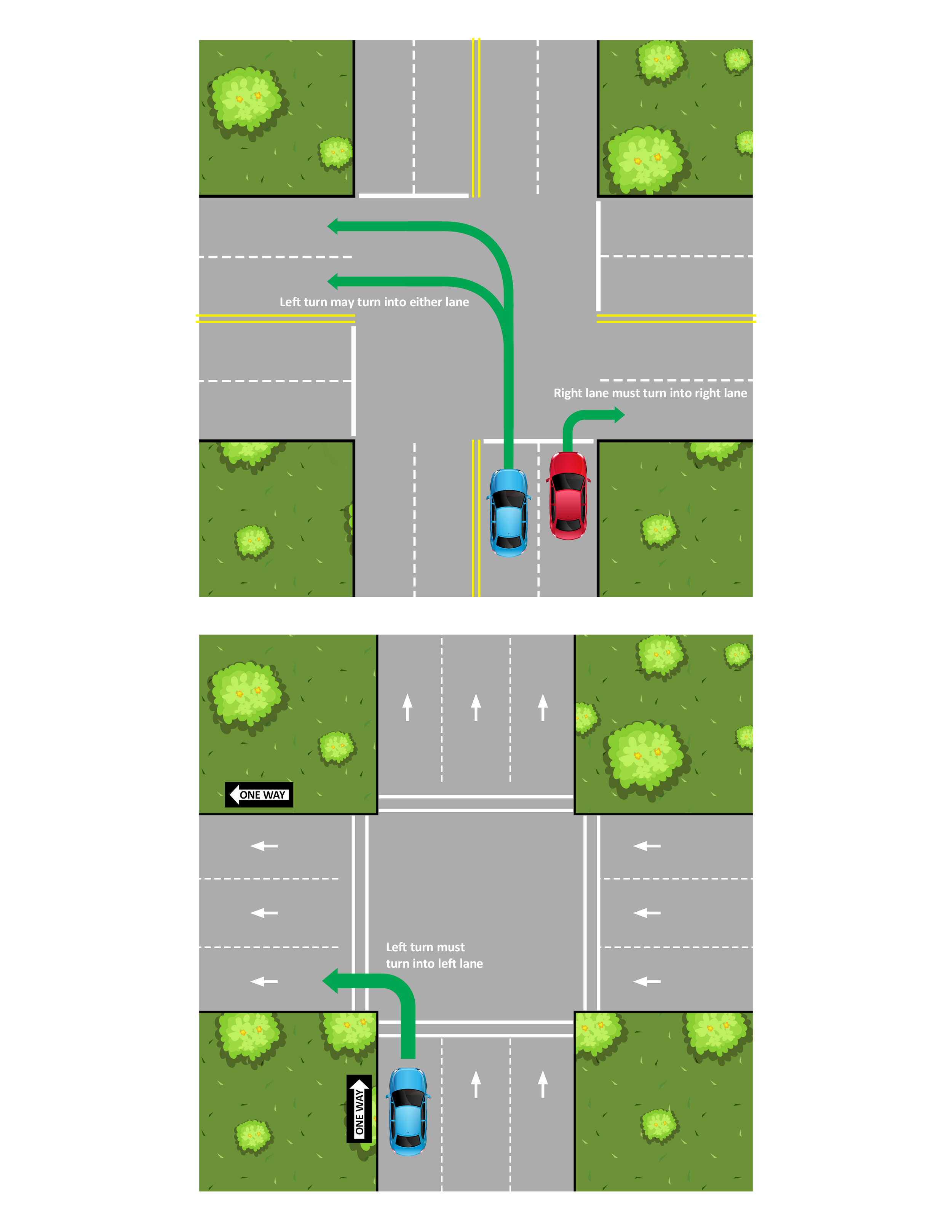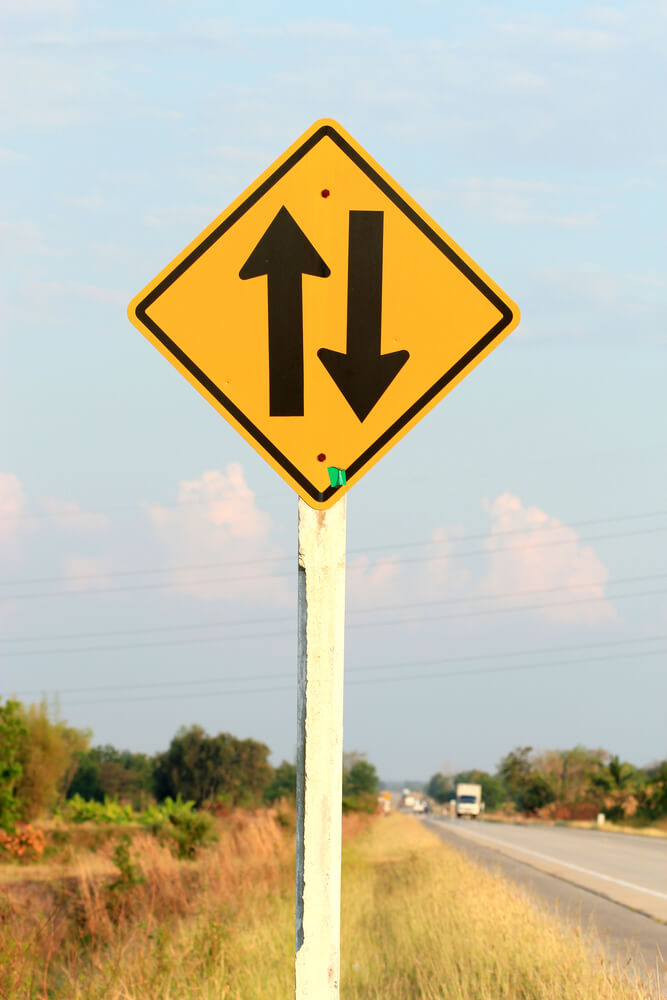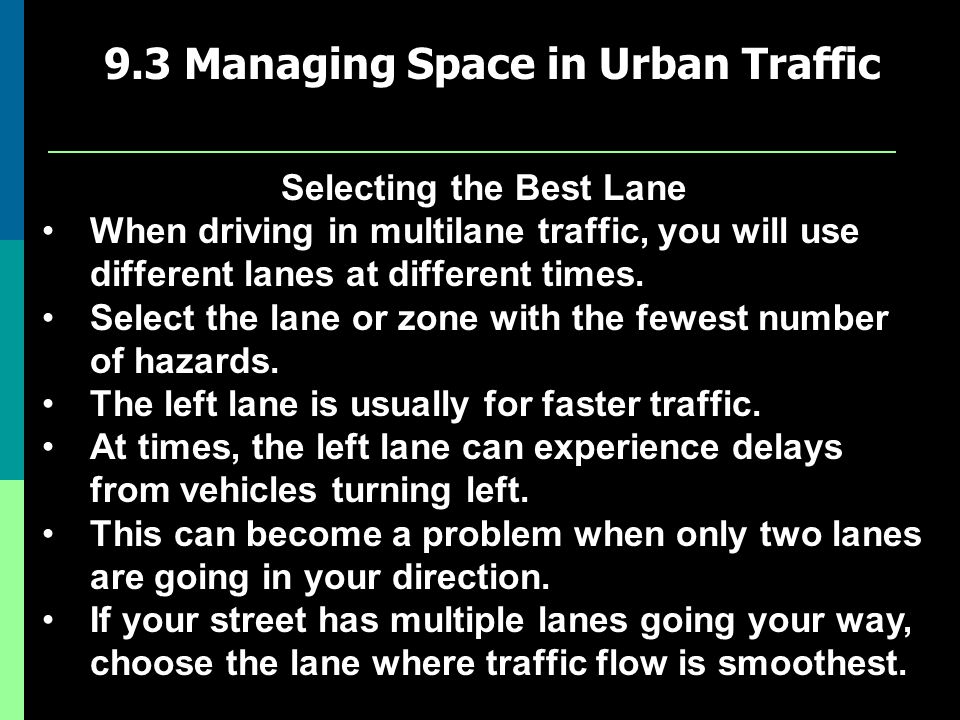When Driving On A Multilane Street With Two-way Traffic:

Imagine yourself behind the wheel, sunlight glinting off the windshield as you navigate a bustling city street. Cars flow in both directions, a symphony of motion orchestrated by lane markings and traffic signals. A cyclist weaves through the cars, and a pedestrian rushes to cross the road. It’s a dance of drivers, all sharing the road, each responsible for keeping the rhythm smooth and safe.
This article delves into the nuances of driving on multilane streets with two-way traffic, offering practical advice and shedding light on the often-overlooked aspects of navigating these complex environments.
Understanding the Road Landscape
Multilane streets with two-way traffic are a common feature of urban and suburban landscapes. They are designed to accommodate a higher volume of vehicles than single-lane roads, but they also present a unique set of challenges for drivers.
Understanding the basics of road markings, traffic signs, and right-of-way rules is paramount to safe and efficient driving.
Lane Discipline: Staying in Your Lane
Maintaining proper lane discipline is crucial for preventing accidents on multilane roads. Avoid weaving in and out of lanes unnecessarily.
Signal your intentions clearly before changing lanes, and always check your blind spots before merging. Remember the adage: "Mirror, signal, maneuver."
Selecting the appropriate lane for your intended route is also important. The right lane is generally for slower traffic, while the left lane is typically reserved for passing.
The Importance of Speed Management
Adjust your speed to the prevailing traffic conditions and the posted speed limit. Excessive speed reduces your reaction time and increases the severity of accidents.
Maintain a safe following distance from the vehicle ahead of you. The commonly recommended "three-second rule" is a good starting point, but you may need to increase this distance in adverse weather conditions.
Be aware of speed variations in different lanes. Traffic in the left lane often moves faster than traffic in the right lane.
Navigating Intersections Safely
Intersections are hotspots for accidents, so extra caution is needed when approaching and navigating them.
Pay close attention to traffic signals, stop signs, and crosswalks. Be prepared to stop for pedestrians or cyclists.
When turning left across oncoming traffic, yield the right-of-way to vehicles that are close enough to constitute an immediate hazard. "Yield" means allowing others to proceed before you.
The Human Factor: Awareness and Courtesy
Driving is not just about operating a vehicle; it's also about interacting with other road users. Awareness and courtesy play a vital role in creating a safer and more pleasant driving experience.
Be aware of your surroundings at all times. Scan the road ahead, check your mirrors frequently, and be vigilant for potential hazards.
Show courtesy to other drivers, pedestrians, and cyclists. A simple wave of acknowledgement or a polite yielding of the right-of-way can go a long way in preventing conflict and promoting a positive driving environment.
Sharing the Road with Vulnerable Users
Pedestrians and cyclists are particularly vulnerable on multilane streets. They are often smaller and less visible than other vehicles, and they are more susceptible to serious injury in the event of a collision.
Be extra cautious when driving near crosswalks, bike lanes, and sidewalks. Yield to pedestrians and cyclists, and give them plenty of space.
Avoid driving distracted, especially in areas where pedestrians and cyclists are present. Putting your phone away is crucial for your safety and for the safety of others.
Dealing with Aggressive Drivers
Unfortunately, aggressive driving is a common occurrence on multilane streets. It's important to remain calm and avoid engaging with aggressive drivers.
Do not retaliate or escalate the situation. Instead, focus on maintaining your own safety and the safety of your passengers.
If you encounter an extremely aggressive driver, consider pulling over to the side of the road and letting them pass. Your personal safety is more important than asserting your right-of-way. According to the National Highway Traffic Safety Administration (NHTSA), aggressive driving contributes significantly to road accidents.
Technological Aids and Safety Systems
Modern vehicles are often equipped with a range of technological aids and safety systems that can help drivers navigate multilane streets more safely.
Features such as blind-spot monitoring, lane departure warning, and adaptive cruise control can provide valuable assistance in maintaining lane position, avoiding collisions, and managing speed.
However, it's important to remember that these systems are not a substitute for attentive driving. Always remain vigilant and be prepared to take control of the vehicle if necessary.
The Role of Driver Education
Comprehensive driver education programs are essential for equipping new drivers with the knowledge and skills they need to navigate multilane streets safely. Driver's Education is the foundation.
These programs should cover topics such as lane discipline, speed management, intersection safety, and the importance of awareness and courtesy.
Continuing education programs can also be beneficial for experienced drivers, helping them to stay up-to-date on the latest traffic laws, driving techniques, and safety technologies.
Legal Considerations and Consequences
Violating traffic laws on multilane streets can result in serious consequences, including fines, points on your driving record, and even suspension or revocation of your driver's license.
In the event of an accident, you may also be held liable for damages and injuries.
It's important to be aware of the specific traffic laws in your jurisdiction and to comply with them at all times.
Driving under the influence of alcohol or drugs is particularly dangerous on multilane streets, as it impairs judgment, coordination, and reaction time. Driving Under the Influence (DUI) can have devastating consequences.
Conclusion: A Shared Responsibility
Driving on multilane streets with two-way traffic requires a combination of knowledge, skill, awareness, and courtesy. It’s a shared responsibility among all road users to create a safe and efficient transportation system.
By adhering to traffic laws, practicing safe driving habits, and showing respect for others, we can all contribute to a more positive and less stressful driving experience.
So, the next time you find yourself behind the wheel on a bustling multilane street, remember that you are not alone. You are part of a community of drivers, all working together to navigate the road safely and responsibly.






